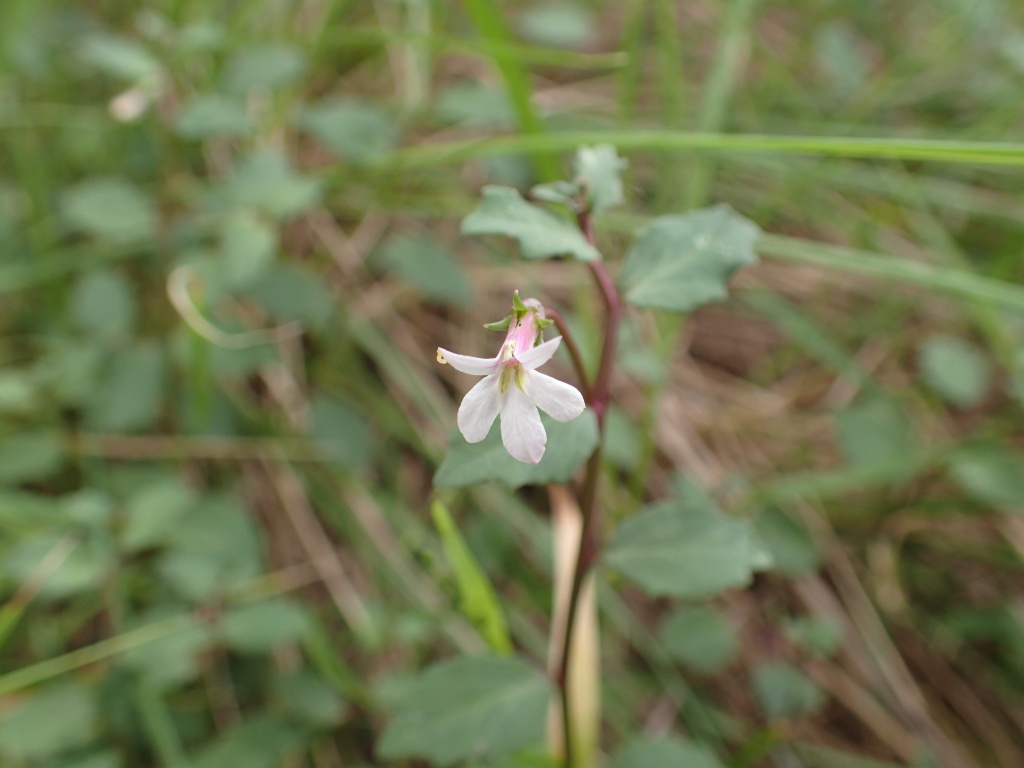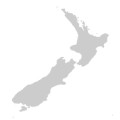Lobelia purpurascens
R.Br. White-rootProstrate to ascending, dioecious perennial; stems sometimes zigzagged, occasionally rooting at nodes. Leaves lanceolate to ovate, 4–28 mm long, 2.5–12 mm wide, usually minutely pubescent above, often purplish beneath, margins toothed, base obtuse; petiole to 2 mm long. Flowers irregularly spaced; pedicels 10–70 mm long, usually longer than leaves, glabrous or rarely minutely pubescent. Calyx-lobes 1.5–3.2 mm long, at least some toothed at base; corolla zygomorphic, (6–)8–12 mm long, white tinged pink or purplish on outside of the tube and lobes, usually white to cream on inner surfaces; upper 2 lobes linear-oblanceolate to linear-lanceolate, 3–4.5 mm long, 0.4–1 mm wide, falcate, lower 3 lobes oblanceolate, (2.5–)4–6 mm long, (1–)1.2–3.5 mm wide, tube 4–7 mm long, split to within c. 0.5 mm of base, with fine retrorse hairs internally; filaments 3.5–5 mm long, anther tube 1.2–1.6 mm long in male flowers, 0.9–1.2 mm long in females, seta of 2 lower anthers 0.2–0.4 mm long. Fruit broadly ellipsoid to globose, (3–)5–10 mm long; seeds ellipsoid, slightly compressed, 0.8–0.9 mm long, brown, alveoles c. isodiametric (seed surface appearing pitted). Flowers Nov.–Jun.
VVP, GipP, EGL, EGU, HSF, MonT, HFE. Also Qld, NSW. Uncommon in Victoria where largely restricted to moist eucalypt forests and woodlands, often near watercourses, but also in sandy shrubland near the coast. Currently known only from the Genoa-Mallacoota area in the far east of the state, but records exist from near Orbost from where collected up until the early 1900s.
Albrecht, D.E.; Walsh, N.G. (1999). Campanulaceae. In: Walsh, N.G.; Entwisle, T.J., Flora of Victoria Vol. 4, Cornaceae to Asteraceae, pp. 553–553. Inkata Press, Melbourne.
 Spinning
Spinning

